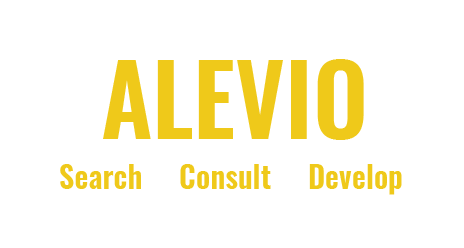
Succession planning is crucial for driving long-term success in any organization. By proactively addressing leadership transitions, businesses can ensure operational continuity and sustain growth even in changing market conditions. This discussion will delve into essential steps for effective succession planning, such as identifying and developing internal talent, establishing a clear framework, and fostering a culture of mentorship and continuous learning. By prioritizing these strategies, business leaders and HR professionals can safeguard their organization’s future and maintain a steady path toward sustainability and growth.
Key Steps for Succession Planning
Identifying and Developing Talent
Identifying and developing talent is a cornerstone of effective succession planning. To start, businesses should conduct a thorough assessment of current employees to identify those with the potential for leadership roles. This involves evaluating skills, performance, and willingness to take on new challenges. Once potential leaders are identified, tailored development plans should be created. This could include leadership training, mentorship programs, and opportunities for increased responsibilities. Moreover, regularly reviewing and updating these plans ensures they align with both the individual’s growth and the organization’s needs. By investing in talent management, companies can build a robust pipeline of future leaders. This proactive approach not only prepares employees for leadership transitions but also contributes to business sustainability and growth. Ultimately, focusing on internal talent development facilitates smooth leadership transitions and strengthens organizational resilience.
Establishing a Succession Framework
Establishing a clear succession framework is essential for effective future planning. This framework acts as a roadmap for identifying, assessing, and developing potential leaders within the organization. It begins with defining critical roles and the skills required for those positions. Next, criteria for evaluating candidates should be outlined to ensure objectivity and consistency in the selection process. Additionally, the framework should include timelines for development and transition, allowing for adequate preparation and minimal disruption. Regularly updating the framework is crucial to adapt to any changes in business objectives or market conditions. Transparency in the process fosters trust and encourages participation among employees. By having a well-documented and structured approach, organizations can ensure operational continuity during leadership transitions. Ultimately, a robust succession framework supports business sustainability and positions the company for long-term growth, reinforcing confidence among stakeholders in the organization’s future.
Embracing Mentorship Culture
Embracing a mentorship culture is vital for nurturing talent and ensuring successful leadership transitions. Mentorship programs create an environment where knowledge and experience are shared freely, promoting continuous learning among employees. By pairing potential leaders with experienced mentors, organizations can provide guidance and support tailored to individual development needs. This relationship helps mentees develop essential skills, gain insights into leadership roles, and build confidence. Furthermore, mentorship encourages employees to set and achieve personal and professional goals aligned with organizational objectives. Creating a culture of mentorship also fosters collaboration and strengthens internal networks, which can be invaluable during times of change. Organizations should encourage ongoing feedback and recognize mentor-mentee achievements to sustain engagement. By prioritizing mentorship, companies not only enhance talent management but also reinforce a culture of growth and innovation. This proactive strategy bolsters business sustainability and prepares the workforce for future leadership challenges.

Ensuring Leadership Transition Success
Fostering Continuous Learning
Fostering continuous learning is crucial for successful leadership transitions and overall organizational development. By embedding a culture of lifelong learning, businesses can adapt swiftly to evolving market dynamics and technological advancements. Encouraging employees to pursue further education and training not only enhances their skill set but also prepares them for future roles. Companies can facilitate this by offering workshops, seminars, and access to online courses. Regular knowledge-sharing sessions and cross-departmental projects can also stimulate learning and innovation. Moreover, continuous learning initiatives should be aligned with business goals to maximize their impact on growth strategies. By doing so, employees remain engaged and motivated, contributing to a dynamic and resilient workforce. Continuous learning supports business sustainability by ensuring that the organization is always equipped with the necessary expertise to tackle new challenges. Ultimately, this approach strengthens the foundation for smooth leadership transitions and positions the company for long-term success.

Maintaining Operational Continuity
Maintaining operational continuity during leadership transitions is essential to avoid disruptions and preserve organizational stability. To achieve this, businesses should develop comprehensive transition plans that outline key responsibilities, timelines, and communication strategies. Clear documentation of processes and procedures ensures that incoming leaders have access to the information they need to make informed decisions. Additionally, involving current leaders in the transition process can provide valuable insights and facilitate a smoother handover of duties. Regular communication with stakeholders during transitions helps manage expectations and maintain trust. It’s also important to assess and address any potential gaps in operations during this period. By proactively identifying and mitigating risks, organizations can prevent interruptions to business operations. Ultimately, maintaining operational continuity requires a strategic approach that integrates succession planning with everyday business practices. This ensures that the organization remains resilient and capable of sustaining growth, even amidst leadership changes, thereby reinforcing confidence in the company’s long-term vision.
Safeguarding Business Sustainability
Safeguarding business sustainability during leadership transitions is pivotal for preserving long-term success. To achieve this, organizations must integrate succession planning into their broader business strategies. This involves aligning leadership development with the company’s future goals and ensuring that new leaders are equipped to drive those objectives. Continuous evaluation and adaptation of strategies help in addressing emerging challenges and opportunities. Furthermore, cultivating a strong organizational culture that values resilience and adaptability supports sustainability. Encouraging innovation and engaging employees at all levels can also contribute to a sustainable business model. By fostering a shared vision and commitment to the organization’s mission, companies can ensure alignment across teams, even during periods of change. Additionally, maintaining transparent communication with stakeholders reinforces trust and confidence in the company’s direction. Ultimately, safeguarding business sustainability requires a forward-thinking approach that combines effective leadership transition planning with ongoing strategic development, thereby securing the organization’s capability to thrive in the future.

Long-Term Growth Strategies
Proactive Future Planning
Proactive future planning is essential for sustaining long-term growth and ensuring that businesses remain competitive. This process involves anticipating future challenges and opportunities, allowing organizations to adapt their strategies accordingly. By regularly conducting market analysis and scenario planning, companies can identify trends and potential disruptors early on. This foresight enables them to innovate and pivot where necessary. Additionally, setting clear long-term goals provides direction and focus for the entire organization. Engaging in strategic planning sessions with key stakeholders can help align these goals with operational capabilities. Furthermore, establishing metrics for success allows businesses to track progress and make data-driven decisions. Encouraging a culture of agility and openness to change ensures that teams remain responsive and resilient when facing new challenges. Ultimately, proactive future planning positions companies to capitalize on opportunities and navigate uncertainties, thereby strengthening their path toward sustained growth and success in an ever-evolving market landscape.
Enhancing Talent Management
Enhancing talent management is a vital component of long-term growth strategies. To achieve this, organizations should focus on attracting, developing, and retaining top talent. This begins with creating a comprehensive talent acquisition plan that aligns with the company’s strategic objectives. By offering competitive compensation, benefits, and career development opportunities, businesses can attract skilled individuals who are committed to the organization’s mission. Once talent is onboarded, focusing on their professional development through training programs, mentorship, and regular feedback is crucial for fostering growth and engagement. Implementing robust performance management systems helps in identifying high-potential employees and tailoring development plans to maximize their contributions. Additionally, cultivating a positive work environment and recognizing achievements can boost employee satisfaction and retention. By prioritizing talent management, companies not only ensure a steady pipeline of future leaders but also enhance their capacity to innovate and adapt, ultimately driving sustained growth and competitive advantage in the marketplace.

Navigating Market Changes
Navigating market changes is crucial for maintaining long-term growth and stability. Organizations must be agile and responsive to shifts in consumer preferences, technological advancements, and economic fluctuations. To effectively manage these changes, companies should invest in market research and analysis to gain insights into emerging trends and potential threats. By staying informed, businesses can anticipate changes and make strategic decisions to exploit new opportunities or mitigate risks. Additionally, fostering a culture of innovation encourages teams to develop creative solutions that address evolving market needs. Adaptability in business operations, such as flexible supply chains and agile marketing strategies, also ensures resilience in the face of uncertainty. Engaging regularly with customers and stakeholders provides valuable feedback that can guide adjustments in products or services. Ultimately, by embracing a proactive approach to market changes, organizations can maintain their competitive edge, ensuring business sustainability and supporting long-term growth in an ever-changing environment.

